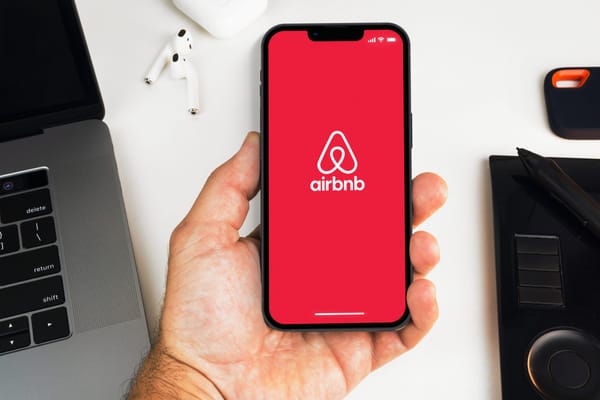How to Buy Multiple Rental Properties at Once

The average landlord owns three rental properties, according to recent research. But statistics can be misleading. Do average numbers show or hide the real picture?
If you're a real estate investor who sets the bar high and aims to build a portfolio of 100+ properties, you're likely searching for ways to scale quickly. While finding good deals, building a rental business, and building trust with lenders don't happen overnight, there are strategies to acquire multiple investment properties.
This article explores strategies and ways to finance multiple properties.
Why Buy and Own Multiple Rental Properties?
While the allure of "100 doors" might sound impressive, the journey of scaling a real estate portfolio is far more nuanced than simply accumulating properties.
The key is not only the number of doors but the strategic value each property brings. A handful of well-selected, high-quality properties in strong locations will outperform a larger portfolio of mediocre units.
However, at a certain point, more doors can establish credibility with lenders, brokers, and potential investors, creating more opportunities for future growth.
Multiple rental properties create multiple rental income streams and spread your investment risk across different locations and property types.
How Do I Buy Multiple Properties?
When acquiring multiple properties, investors navigate a complex landscape of mortgages, legal structures, and financial planning.
Here's what you need to know.
Can I Buy Multiple Properties With One Mortgage?
Yes, you can absolutely buy multiple investment properties under a single mortgage. These loans essentially bundle your investments under one financial umbrella.
Options like DSCR loans, blanket loans, portfolio loans, and also conventional loans provide flexibility in multi-property acquisition. Some options limit the number of properties you can purchase. Others don't focus on your creditworthiness but rather on the performance of your existing rental portfolio.
Keep reading to find out the details of each approach and financing option.
What Are the Requirements?
The mortgage requirements for a loan covering multiple rental properties are stricter than those for ordinary home loans. You need a credit score of at least 670 (or higher). Interest rates on a mortgage are also higher.
A down payment of a minimum of 20% or more is required. Often, you need to have cash reserves equal to 6-12 months of mortgage payments per property. Traditional lenders prefer a DTI (debt-to-income) ratio below 45%.
First-time investors may face more stringent requirements. However, not all lenders take parameters like credit score into account.
Should I Buy Rental Properties in My Personal Name or Inside My LLC?
When running a rental business, a common question is whether to buy properties through an LLC (Limited Liability Company) or in your personal name.
An LLC separates liability between you and your business, offering some legal protection. It shields your personal assets if a tenant files a lawsuit related to the rental property. The only problem is that conventional loans prohibit LLC ownership.
But even if you purchase properties in your personal name, you can protect your personal assets with an umbrella liability insurance policy. This policy supplements your standard property or general liability insurance. An umbrella policy defends against claims such as injury on the property, discrimination allegations, property damage, and serious accidents involving tenants.
On the other hand, an LLC provides flexible management structures and profit-sharing arrangements among members, which can benefit partnerships or multiple investors.
Could FHA and VA Loans be Used to Finance Rental Properties?
There's an important distinction between conventional and unconventional loans. FHA and VA loans are unconventional loans, backed by the government and secured through banks. Designed for individuals with lower income levels and credit scores, these loans offer down payments as low as 3.5%.
These loans are intended for individuals purchasing their primary residence and not an investment property. Therefore, you can't buy an investment property directly from an FHA or VA loan.
However, you can take one of these loans, make the property your primary residence, and live in it for 12 months. After the year has passed, you can move out and rent it out. Nevertheless, this strategy is not suitable for scaling a portfolio and buying multiple rental properties.

Strategies to Finance Multiple Rental Properties
Now, let's explain each method you can use to reach your business goal and own and manage multiple properties.
Conventional Loan
If you plan to finance up to ten properties and have a good credit score along with some savings, you can opt for conventional mortgages. Conventional loans follow the guidelines set by Fannie Mae and Freddie Mac.
To obtain reasonable interest rates, you need an excellent credit score. Be prepared to have at least six months of cash reserves to demonstrate you can cover mortgage payments if the property remains vacant for a while. Your debt-to-income ratio must be below 45%, and you'll need to put down at least 20%.
Although lenders can approve you for up to ten properties, they typically limit this number to four. You could find specialized portfolio lenders willing to finance 6-10 properties at higher interest rates. For more than five properties, you will likely need a credit score of at least 720 and meet other stricter requirements.
Pros
- Lower interest rates compared to other investment property loans.
- Clear, established qualification criteria and standardized terms.
Cons
- Cap on the number of properties, usually up to 4.
- High credit score needed (680-720+).
DSCR Loan or Cash Flow Mortgage
A Debt Service Coverage Ratio (DSCR) loan is a no-income or non-QM (non-qualified mortgage) loan type. What does it mean? It means you qualify for a loan based on your current portfolio's cash flow, not your personal income or credit score. You don't need to meet strict criteria like you would with a traditional lender.
The DSCR measures a property's annual gross rental income against its debt payments. Basically, you can qualify for multiple loans based on income projections (together with current performance). Options include 30-year fixed rates, interest-only periods, and variations tailored to property investors' needs. Prepayment penalties are common, ensuring lenders' investment security. Interest rates are slightly higher compared to conventional loans.
How do real estate investors find a lender that provides a DSCR mortgage? The best way is to find a mortgage broker who works with these lenders. As this is not a government-backed loan that follows established criteria like those of Fannie Mae and Freddie Mac, each lender has its own set of requirements. A mortgage broker should take into account your rental property portfolio performance and goals to put you in contact with the right lender.
Pros
- Personal income, credit score, and DTI ratio are NOT qualification criteria for this loan.
- You can qualify based on income projections of your deal and current portfolio performance.
Cons
- Every lender that offers DSCR loans has its own set of requirements.
- Prepayment penalties are common.
Portfolio Loan
Portfolio lenders focus more on the property revenue potential than your credit score. You still need to look decent "on paper," such as fulfilling minimum credit score requirements. That's why portfolio loans are a good option for investors who are buying multiple rental properties, including more than 10.
Because portfolio loans remain on the lender's books and are not sold to secondary market investors like Fannie Mae or Freddie Mac, they carry inherently higher risk. Therefore, lenders protect themselves. They impose more stringent requirements and charge premium interest rates.
Pros
- You can get a loan for 10+ properties.
- You don't need a perfect credit score or DTI ratio; the focus is on revenue potential.
Cons
- High interest rates, fees, and eventual penalties for violating the loan.
- Harder to get approved for beginner investors.
Blanket Loan
A blanket loan is a single mortgage that covers multiple properties. A group of assets collectively serves as collateral. It's typically used by real estate investors or developers who want to consolidate financing under one loan.
The key difference is that if you decide to sell one property, you can use the release clause to remove that property from the loan. That's why developers use this loan, though other investors can obtain it, too.
Blanket loans are less common than traditional mortgages and are typically offered by commercial lenders, private lenders, or certain regional banks.
Pros
- Consolidates multiple mortgages under a single mortgage.
- Includes a release clause, allowing you to sell one property without paying off the entire loan.
Cons
- Limited lender availability.
- Larger down payment requirements and complex terms.
Home Equity Loans
Home equity loans are not investment property mortgages. But this is one alternative "creative" way to finance your investment portfolio. It works this way:
You leverage equity in your existing properties to finance new deals. One option is a traditional home equity loan that has fixed interest rates. You borrow a lump sum of money using your home's equity as collateral.
A HELOC also uses your home's equity as collateral. But there's a difference. HELOC is a revolving line of credit that allows you to borrow money as needed, up to a set credit limit. You pay back only the sum and interest on what you borrow, not the whole line of credit. Interest rates are variable.
There's also cash-out-refinance when you replace an existing mortgage with a new mortgage and cash out the difference in cash.
Pros
- You leverage your existing equity.
- Quicker approval times.
- Lower interest rates compared to other financing options.
Cons
- Leveraging your home’s equity increases your overall debt.
- The amount you can borrow is limited to your home’s equity (typically up to 80–85%).
Hard Money Loan
Hard money loans are obtained from hard money lenders. These are short-term, real estate-specific, asset-based loans.
Hard money loans act as bridge loans for buyers who need quick funding while waiting for long-term financing. They are ideal for investors pursuing a fix-and-flip strategy. House-flipping projects often require fast decisions and immediate capital to secure distressed properties. They come with higher costs and short repayment terms.
Since hard money lenders focus on the asset itself, finding a good deal is the priority to make this financing method work for you.
Pros:
- Quick access to capital.
- No limits on the number of properties.
- Best for restoring distressed properties using the fix-and-flip strategy.
Cons:
- Not easy to find hard money lenders and gain their trust.
- Very high interest rates and short repayment terms.

Tips For Buying Rental Properties
Let's answer a few more common questions and give some tips.
How to Choose the Right Loan for Multiple Properties?
If you think about how to buy multiple rental properties, you'll have several financing options. Some are a better fit for your situation than others. If you're unsure about the decision, consulting a loan officer is a good idea.
Hard money loans are typically useful for fix-and-flip strategies. If you’re looking to purchase multiple properties and already have an established business, portfolio loans are a great option. The main challenge often lies in finding the right lender who understands and meets your specific needs.
What Is the 2% Rule for Rental Properties?
The 2% rule is a quick guideline real estate investors use to analyze deals. It helps investors screen properties efficiently. If a property doesn’t meet the 2% threshold, it may not generate enough cash flow to be worth pursuing.
The rule states that a property's monthly rental income should be at least 2% of its purchase price (for example, a $100,000 property should bring in $2,000 in monthly rent). However, if a property doesn’t meet this threshold, it doesn’t necessarily mean it’s a bad deal. You also need to consider long-term appreciation potential and other factors. The 2% rule simply provides a quick ballpark figure to help guide your decision-making.
How to Use 1031 Exchange?
The 1031 exchange is a strategy real estate investors regularly employ when selling a property, allowing them to defer capital gains tax. Instead of paying taxes immediately, they reinvest the money in another investment property. This keeps their portfolio growing while deferring tax liability.
Tax benefits are not the only advantages you can have in real estate investing. Another advantage is how easily you can implement a property management system to help manage your real estate portfolio.
iGMS specializes in short-term rental management. It's designed for investors with multiple properties listed on platforms like Airbnb and VRBO. You can focus on growing your portfolio while we handle your day-to-day workload. Oversee all your properties from your phone at any time.
About the Author
Zorica Milinkovic is a B2B SaaS writer who is passionate about psychology, marketing, and, when inspiration strikes, cooking. You can find her on LinkedIn.






